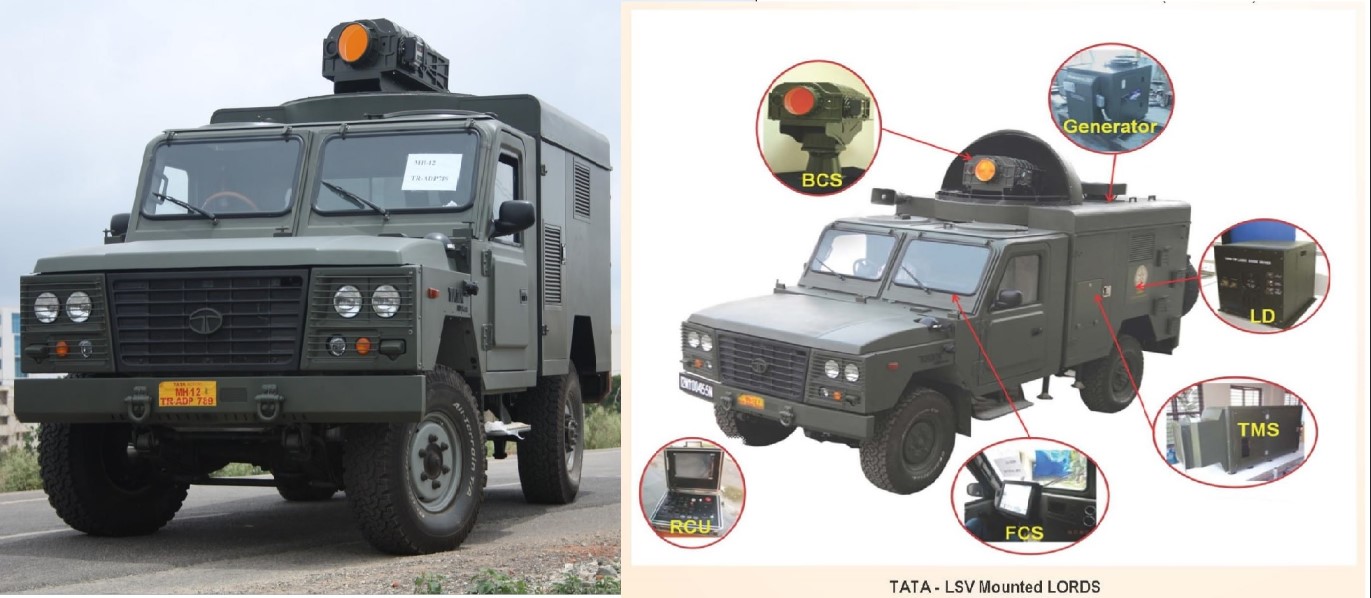DRDO-TATA LORDS (Laser Ordnance Disposal System)

The DRDO-TATA LORDS (Laser Ordnance Disposal System) utilizes high-energy laser technology to safely neutralize unexploded ordnance and improvised explosive devices from a distance, enhancing precision and operator safety. Developed collaboratively by DRDO and TATA Group, this system integrates advanced targeting, monitoring, and remote control components for efficient ordnance disposal.
The DRDO-TATA LORDS, an acronym for Laser Ordnance Disposal System, represents a significant advancement in defense technology, marking a collaborative effort between India's Defence Research and Development Organisation (DRDO) and TATA Group. This cutting-edge system is designed to neutralize unexploded ordnance (UXO) and improvised explosive devices (IEDs) using directed energy, offering a safer and more efficient alternative to traditional disposal methods.
Overview of LORDS
LORDS utilizes high-energy laser technology to disable and destroy explosive devices from a safe distance. This system is equipped with advanced targeting mechanisms to precisely direct laser energy onto the explosive, causing it to detonate in a controlled manner or rendering it harmless. The use of lasers for ordnance disposal reduces the risk to human operators and minimizes collateral damage, making it an invaluable tool in both military and civilian applications.
Key Components of LORDS
The LORDS system is composed of several integral components, each playing a crucial role in its operation:
1. BCS (Beam Control System):
The Beam Control System is responsible for directing the laser beam onto the target with high precision. It ensures the accurate alignment and focusing of the laser, compensating for any environmental factors such as atmospheric disturbances. The BCS is critical for maintaining the effectiveness of the laser in neutralizing threats.
2. Generator:
The Generator provides the necessary power for the entire system. It ensures a stable and continuous energy supply, which is crucial for the high-energy demands of the laser. The generator must be reliable and robust, capable of operating in various field conditions without interruption.
3. LD (Laser Device):
The Laser Device is the core component that generates the high-energy laser beam. It is designed to produce a beam of sufficient power and quality to effectively neutralize explosive devices. The LD must be durable and capable of sustained operation, as it is the primary tool for ordnance disposal in the LORDS system.
4. TMS (Targeting and Monitoring System):
The Targeting and Monitoring System is responsible for identifying, tracking, and assessing potential threats. It incorporates advanced sensors and imaging technologies to provide real-time data on the target, ensuring accurate engagement by the laser. The TMS also monitors the effectiveness of the laser strike, providing feedback for any necessary adjustments.
5. RCU (Remote Control Unit):
The Remote Control Unit allows operators to manage the LORDS system from a safe distance. It provides interface controls for targeting, firing, and monitoring the laser device. The RCU is designed to be user-friendly, ensuring that operators can effectively manage the system without being in proximity to potential threats.
6. FCU (Fire Control Unit):
The Fire Control Unit integrates the targeting data from the TMS with the operational commands from the RCU to execute the laser strike. It ensures that the laser is fired with precision and that all safety protocols are followed. The FCU is a critical component in the decision-making process, balancing the need for effective ordnance disposal with the imperative of operator safety.
Advantages of LORDS
The development and deployment of LORDS offer several advantages:
- Enhanced Safety: By using a remote-controlled laser system, LORDS significantly reduces the risk to personnel involved in ordnance disposal.
- Precision: The advanced targeting systems ensure that the laser beam is accurately directed, minimizing collateral damage.
- Efficiency: LORDS can neutralize threats quickly and effectively, making it a valuable tool in high-risk environments.
- Versatility: The system can be used in a variety of scenarios, from military battlefields to urban areas where UXOs and IEDs pose significant risks.
Conclusion
The DRDO-TATA LORDS represents a remarkable leap in ordnance disposal technology. Its combination of precision, safety, and efficiency makes it an essential asset for modern defense forces. As the technology continues to evolve, systems like LORDS will play an increasingly important role in safeguarding both military personnel and civilians from explosive threats.


